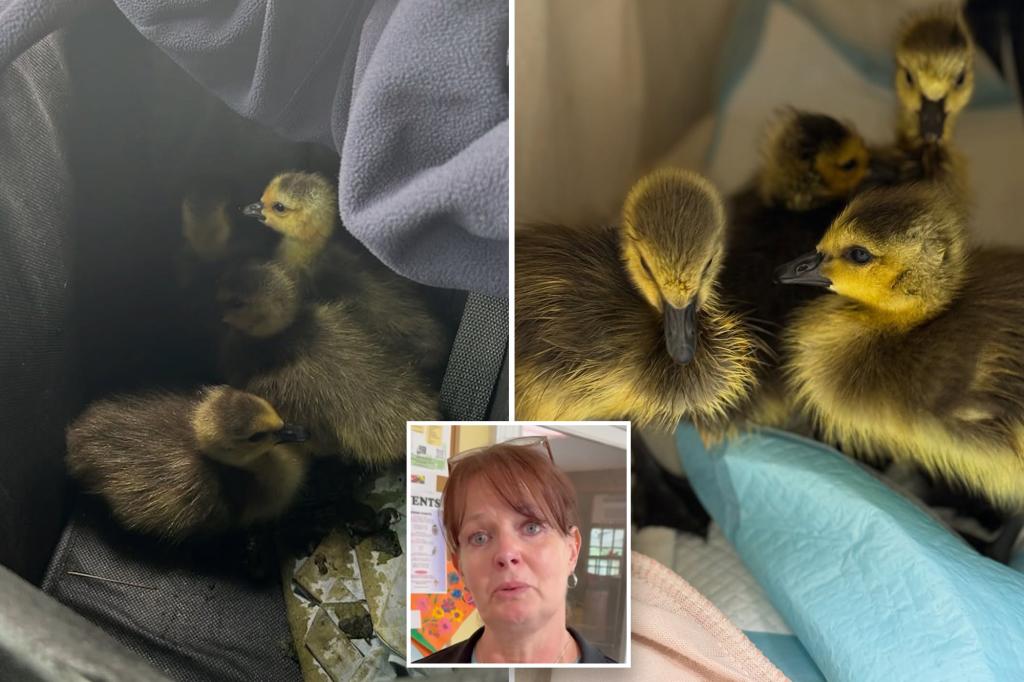Tragedy on the Road: A Long Island Driver’s Devastating Encounter with a Family of Geese
A Long Island driver faced a heart-wrenching moment last week when their vehicle struck and killed a family of geese crossing a busy roadway in Nassau County. The incident, which occurred during morning rush hour on Sunrise Highway, has reignited discussions about wildlife safety in urban areas. Witnesses reported the geese—a pair of adults and several goslings—attempted to navigate traffic but were unable to avoid the oncoming vehicle.
The Growing Conflict Between Wildlife and Urban Expansion
Long Island’s rapid development has increasingly brought vehicles and wildlife into dangerous proximity. According to the New York State Department of Environmental Conservation (DEC), vehicle-animal collisions have risen 17% in Nassau and Suffolk counties since 2019. Geese, particularly Canada geese, frequently fall victim due to their nesting habits near ponds and parks adjacent to roads.
“This tragedy reflects a systemic issue,” explains Dr. Rebecca Morrow, a wildlife biologist at Hofstra University. “Geese mate for life and raise their young as a unit. When we build roads through their habitats, we’re essentially creating obstacle courses during their most vulnerable seasons.”
Why Geese Cross Roads: The Science Behind the Danger
Canada geese typically cross roads for three primary reasons:
- Accessing nesting sites near water sources
- Leading goslings to feeding areas
- Following established migratory paths disrupted by development
The DEC reports that 63% of goose-vehicle collisions occur between May and July—peak rearing season when goslings cannot fly. Sunrise Highway, where this incident occurred, borders multiple retention ponds that attract nesting pairs.
Community Reactions and Road Safety Measures
Local responses have been mixed. While some residents express sympathy for both driver and animals, others criticize insufficient wildlife protections. “I brake for geese every spring,” says commuter Mark Tolbert. “But you can’t expect everyone to see them in time, especially with our traffic speeds.”
Nassau County transportation officials note that wildlife warning signs and reduced speed limits near known crossing areas have reduced collisions by 22% where implemented. However, only 15% of high-risk zones currently feature such measures due to budget constraints.
Innovative Solutions from Other Regions
Several communities facing similar challenges have adopted creative solutions:
- Tunnels and bridges: Vermont’s “critter crossings” reduced animal fatalities by 89% on Route 7
- AI detection systems: Colorado’s smart cameras alert drivers to wildlife 500 feet ahead
- Habitat buffers: Maryland mandates 100-yard vegetated barriers between roads and waterways
Long Island could implement similar strategies, suggests urban planner David Chen: “We have the data showing hotspot areas. Targeted infrastructure changes paired with public awareness campaigns would significantly improve outcomes.”
The Emotional Toll on Drivers and Witnesses
Psychologists note that animal-vehicle collisions can cause lasting trauma. “Many drivers experience symptoms similar to PTSD,” explains Dr. Elena Rodriguez of Northwell Health. “Our society lacks protocols for these incidents, leaving people to process grief alone.”
The involved driver, who requested anonymity, shared through a counselor: “I’ll never unsee those goslings. I wish there’d been some warning—for them and for me.”
Next Steps for Long Island’s Wildlife Safety
Advocacy groups are petitioning for:
- Increased funding for crossing signs and speed controls
- Community reporting systems for wildlife sightings
- Driver education about seasonal animal patterns
As development continues, balancing infrastructure needs with ecological responsibility remains critical. Readers can contact their local representatives to support wildlife protection measures or volunteer with organizations like the Long Island Wildlife Rescue Coalition.
This tragedy serves as a sobering reminder that our roads intersect not just locations, but lives. With thoughtful planning and collective action, future incidents might be prevented—sparing both human conscience and animal lives.
See more Update My News



